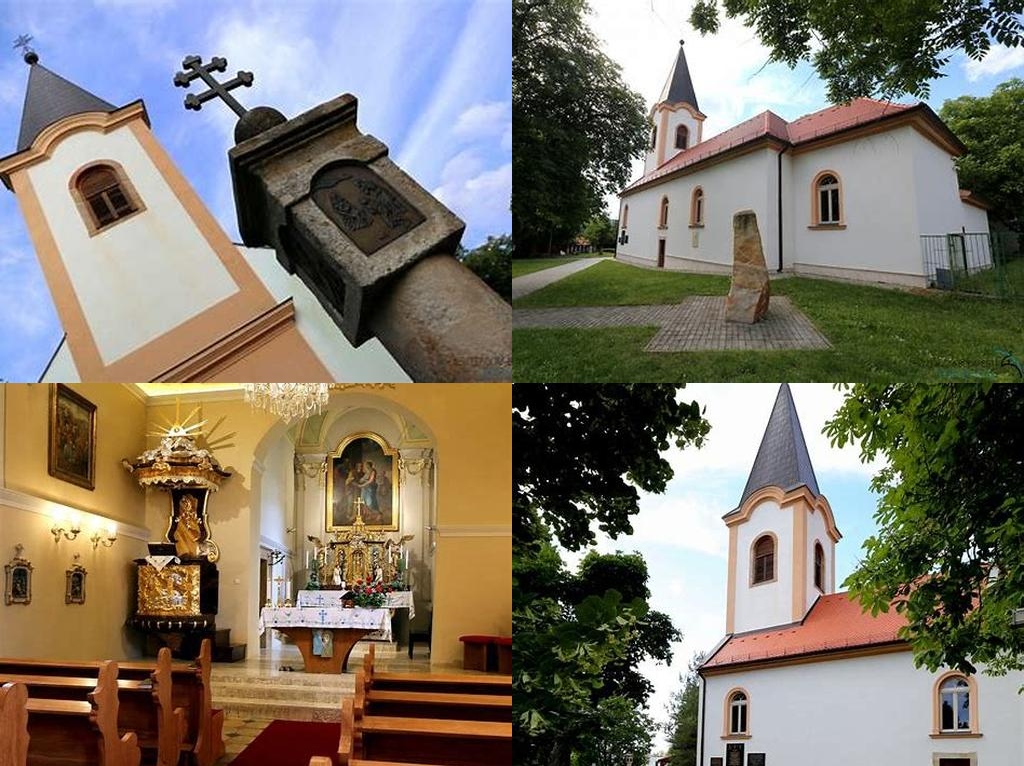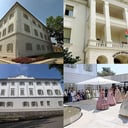
Pesthidegkúti Sarlós Boldogasszony-templom stands quietly on the leafy fringe of Budapest, nestled in the tranquil neighborhood of Pesthidegkút. Absent from the usual itinerary of Budapest’s high-energy sightseeing spots, this church is where you wander when you’re looking for something honest, atmospheric, and saturated with local stories you can’t find in guides. Surrounded by the calming hush of suburban gardens, the church is at the heart of Fő utca (Main Street), where time slows down enough to let you savor every stone and songbird.
The name “Sarlós Boldogasszony-templom” might sound mysterious at first, but it holds a poetic meaning—the Church of Our Lady of the Sickle. This title harks back to old agrarian traditions, invoking the Virgin Mary in a harvest context, reflecting the lives of the farmers who once dominated the landscape. Even today, the church’s small bell tower presides over green stretches that seem to roll away toward the edge of the city, a reminder that Pesthidegkút developed as a peaceful farming village. The present church’s story begins in 1761, when the local Swabian German settlers, eager for a spiritual home, laid its cornerstone. These settlers came as part of widespread resettlements in the region after the Turkish occupation, and their hard work—layered brick by brick—shaped not just the structure, but the surrounding community’s identity.
Inside, you’ll find something strikingly simple: the kind of tranquility that’s almost tactile. Sunbeams sneak through tall, arched windows, washing the white-walled nave with gold in the late afternoon. The centerpiece, the Baroque high altar, is adorned with a painting of Mary holding a sickle, a detail that always gets people talking. It’s rare to see so literal an image of Mary as a patron of harvests; the sickle in her hands links her directly to the soil, working people, and their prayers for abundance. Subtle polychrome details and a handful of delicately restored statues nod to both the Baroque and Rococo periods—mostly created by anonymous hands from the late 18th century. These flourishes are gentle, never excessive, reminding you that this was once a rural church, built for a tight-knit community rather than show.
From the outside, the church is delightfully unassuming, its pale yellow façade peeking between the elms and chestnuts. The slender bell tower, capped with a stumpy onion dome, is painted the same soft hue, weathered enough to give the sense that it’s seen its share of celebrations and sorrows passing by on foot. Local tales recount the ringing of its bell after the end of both World Wars, and during annual feasts like the Sarlós Boldogasszony (Feast of the Visitation), still marked with small processions along the main street. Next door, the modest parish house and well-kept garden echo a walled-off sense of self-sufficiency, hinting that the church still forms the spiritual center of this outlying district.
Don’t be surprised if you stumble across multilingual echoes as you wander around. Pesthidegkút has long housed German, Hungarian, and Slavic families side by side. The church, accordingly, has witnessed baptisms and weddings in more than one tongue; its registry is a local microcosm of Middle European migration and coexistence. Services are still held for the local Catholic community, and even if you don’t attend, it’s worth noting the daily rhythm that animates this peaceful corner.
It’s tempting to treat Pesthidegkúti Sarlós Boldogasszony-templom as a mere stopover before heading back into Budapest proper, but to do so is to miss its quiet gifts. Slip into a pew, let the silence settle, listen out for the bell, and you’ll find yourself reflecting on the resilience of people and place. Strolling through Pesthidegkút after, the understated charm lingers—one more hidden layer in Budapest’s endlessly unfolding story.





